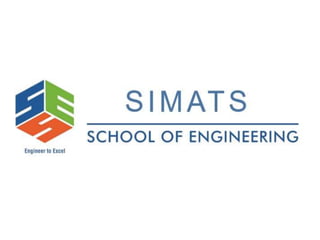
EVOLUTION OF MANAGMENT
- 2. Evolution of Management Thought BY: M Naveen Sai Ashish 191914089l
- 4. PRE SCIENTIFIC MANAGEMENT ERA > CONTRIBUTORS- Adam Smith talks about division of labour in his book Wealth of Nations written in the year 1776. > In the year 1832 Charles Babbage emphasised on Scientific method of managing an enterprise. > Other Contributors- James Watt, Robert Owen, Henri Robinson Towne etc. FOCUS Military and religious Orgnaisation Contribution Sporadic organised activity like Egyptian Pyramids and Chinese walls. Limitation No systematic management knowledge and techniques till Industrial Revolution.
- 5. CLASSICAL MANAGEMENT ERA (1880s-1920s) • It signifies beginning of systematic study of organisations and management practices. • 3 main streams of management thinking under CME are- 1. Scientific Management 2. Administrative Management 3. Bureaucratic Management SCIENTIFIC MANAGEMENT > Emphasises the use of scientific method in decision making tackling organisational problems. > Main Contributors: FW Taylor, Carl Barth, H.L. Gantt etc. > Concept- SM is about knowing what you want men to do and see that they do it in most efficient way.
- 6. PRINCIPLES OF SCIENTIFIC MANAGEMENT 1. Development of a science for each element of work- Standard output. 2. Scientific Selection, training and development. 3. Close cooperation between workers and management. 4. Division of responsibility between management (planning) and workers(doing). 5. Mental revolution (Workers should not treat their managers like enemies) 6. Maximum prosperity for employees. TECHNIQUES OF SCIENTIFIC MANAGEMENT 1. Time Study 2. Motion Study 3. Standardisation- Tools and R/M to increase efficiency of workers. 4. Differential Piece-rate plan 5. Functional foremanship
- 8. ADMINISTRATIVE MANAGEMENT > Focuses on manager and the use of general principles and functions for improving organisational functioning. > Main Contributors- Henri Fayol, Mooney, Alan.C.Reiley. > Major findings of this study- 1. Classification of business activities- Technical, Commercial, Financial, Security, Accounting and Managerial activities. 2. Basic functions of manager- Planning, organising, Commanding, Coordinating and Controlling. 3. .Qualities and skills of a manager- Physical Quality, Mental ability, moral education etc. 4. Principles of Management- Division of labour, Parity of authority and responsibility, Discipline, Unity of Command, Unity of direction, Subordination of individual interests to general interest, Fair remuneration, Centralisation and Decentralisation, Scalar Chain, Order, Equity, Stability of tenure of personnel, Initiative, Esprit de corps.
- 9. BUREAUCRATIC MANAGEMENT • Focuses on use of rules, set hierarchy for job positions, division of work and allocation of authority. • Max Weber is the major contributor of Bureaucratic management and he identified 3 types of organisation depending on exercise of authority- 1. Charismatic Authority Structure 2. Traditional Authority Structure- temples 3. Rational-Legal Authority Structure FEATURES OF IDEAL BUREAUCRATIC ORGANISATION 1. Specialisation 2. Hierarchy of Authority 3. Rules 4. Impersonality 5. Trained Managers
- 10. NEO-CLASSICAL MANAGEMENT ERA 1. HUMAN RELATIONS APPROACH Contributors- Elton Mayo and his group of researchers. 1927-1932, Harvard business school, Hawthorne works of western electric company, Chicago. Hawthorne study comprised of a. Illumination Experiments- No relation between factory lighting and productivity. b. Relay assembly test room experiments- No strong correlation between change in rest time and productivity. c. Mass interview programme- Talk about informal group. d. Bank wiring room experiments- Existence of strong informal group.
- 11. BEHAVIOURAL SCIENCE APPROACH Adopts a scientific approach to understand, explain and predict human behaviour in organisational set up. Contributors- Maslow, herzberg, Mc.Gregor, Mouton, Blake etc. HUMAN RELATIONS APPROACH BEHAVIOURAL APPROACH It aims at humanising organisation. It aims at analysing and studying human behaviour It emphasises on social and psychological needs of employees. Empahises on inter personal relations used by employees. Here individual's differences are not considered. Differences in terms of personality, beliefs, values and goals are considered. Employees productivity is dependent on economic rewards. Productivity depends on morale, satisfaction, motivation etc
- 12. MODERN MANAGEMENT ERA 1. QUANTITATIVE MANAGEMENT > Also known as Management Science or Operations Research. > Focuses on application of scientific tools providing a quantitative base for decision making to managers. > Quantitative management utilises the techniques given by following m mmdisciplines > A. Management Science- Critical path method (CPM), Probability, Sampling theory etc. > B. Operations management- Production activities and logistic related. E.g- Statistical quality control, Production planning, Replacement of machinery etc. > C. Management Information System (MIS)- Use of computer to process raw information suitable for decision making.
- 14. Key Concepts of a System 1. Sub-System: Department is sub system of a company, company is a subsytem of group of companies which is subsytem Economy 2. Environment- Internal and External which are constantly interacting within the system* 3. System Boundary- physical boudaries are visible but social and human boundaries are difficult to make* 4. Open and Closed system- with relation to enviroment* 5. Input output conversion process 6. Feedback- System performance with relation to environment is assessed. 7. Synergy.
- 15. Contingency Management • Believes that Management is dependent on environment. • Managers under this approach won't prescribe a standard solution rather will ask questions- Which method will be most appropriate under given situation? • It uses the synthesis of classic, neo classical and system approach as per requirement. • Contributors- Mary Parker Follett, Fiedler's Contingency model, House Path goal theory etc.